Ben Hogan Vs Bobby Jones – Who Had The Better Career?
One was the greatest swinger of a golf club, the other the greatest amateur and both of them achieved an enormous amount through their careers…

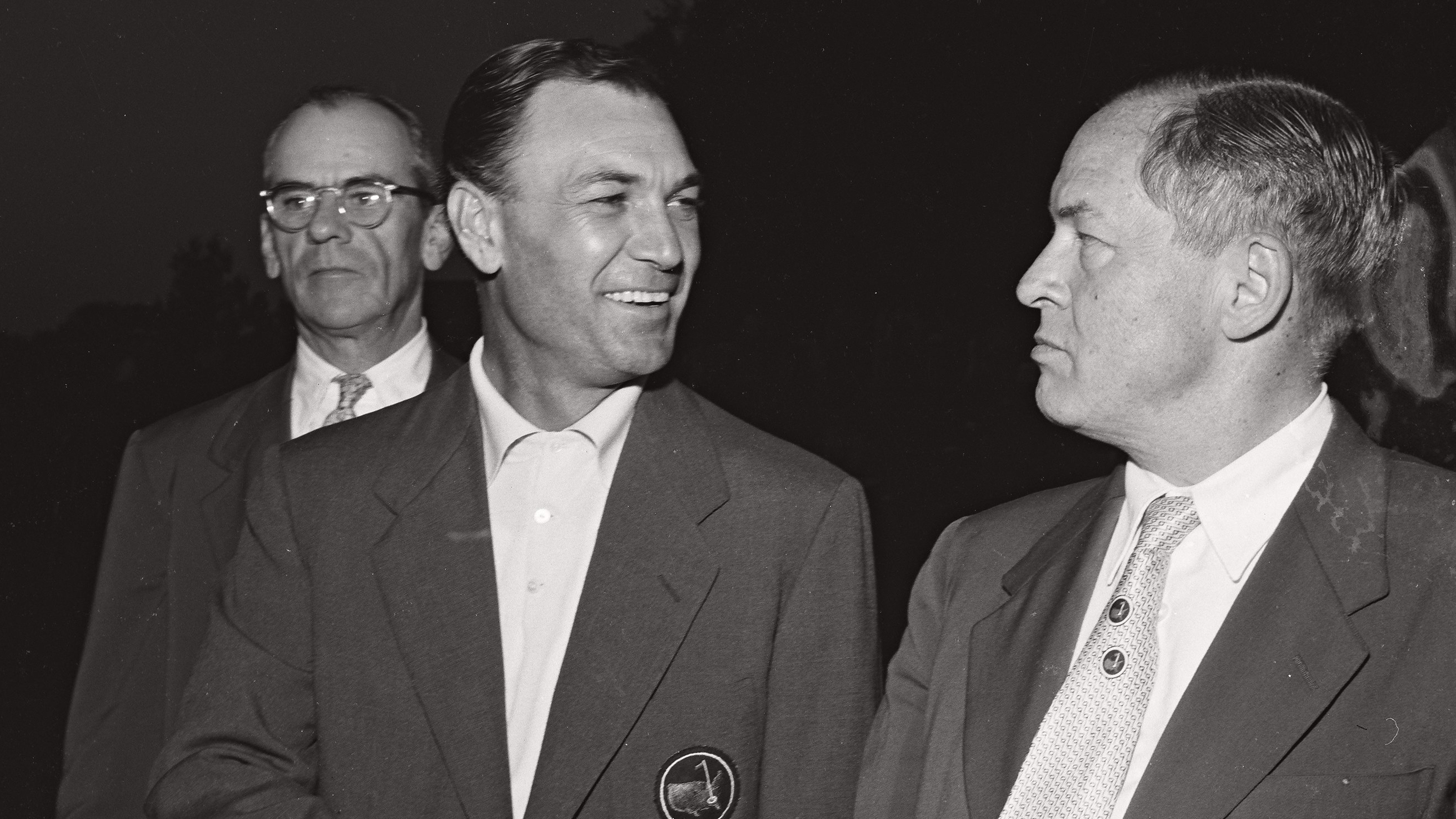
The careers of Ben Hogan and Bobby Jones were quite different principally, within golf, because Ben Hogan turned professional at a young age and continued to play competitively into his 50s while Bobby Jones remained an amateur whilst competing then retired from competitive golf when he was just 28.
Both men were Major champions, both enjoyed success in team competition and both had significant off-course interests either within or outside golf. Trying to compare their careers is challenging and is of course subjective to a large degree. The men were only 10 years apart in age, but their playing careers did not overlap. For that reason, it’s extremely tough to suggest that in their primes, one was a superior golfer to the other. What we can say is that both achieved greatness on the golf course and both have a legacy that has earned them a permanent place in the history of our game. Let’s consider their respective careers.
Ben Hogan
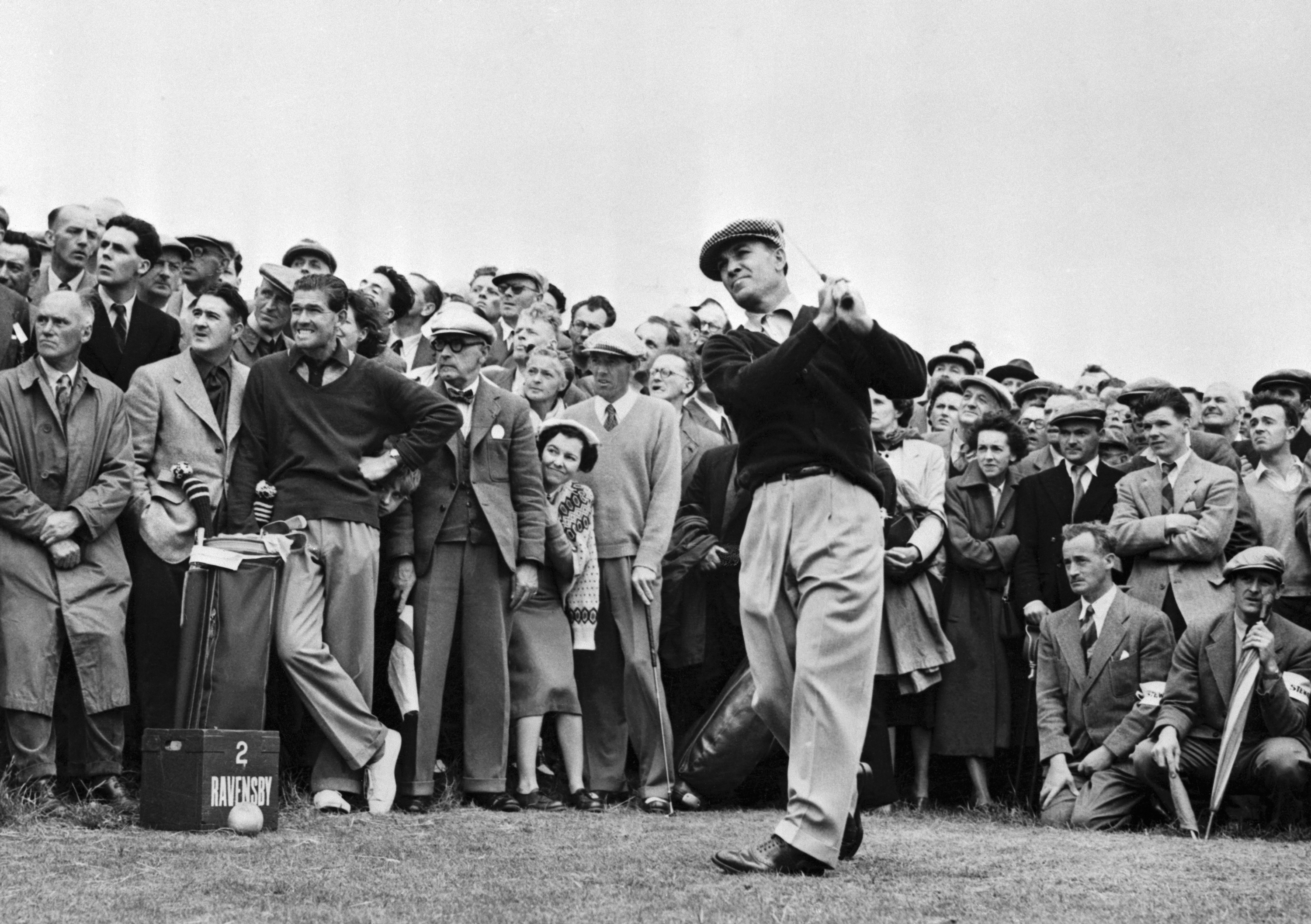
Ben Hogan playing in the 1953 Open Championship at Carnoustie
Hogan turned pro in 1930 at the age of just 17, but it wasn’t until 1940 that the Texan won his first individual tournament as a professional. He spent his first years in the paid ranks as a poorly paid club pro. He then enjoyed a great spell, finishing as leading money winner on the PGA Tour circuit in 1940, 41 and 42.
The Second World War caused a first interruption to his playing career and he spent two years (43 to 45) in the US Army Air Forces, stationed at Fort Worth.
After the war, Hogan continued to be a dominant force on the re-established PGA Tour. In 1946, he won an incredible 13 times, including the PGA Championship – the first of his nine Major titles. He won seven times in 1947 and 10 times in 1948, with another PGA Championship and a first US Open title secured that season.
Then, in 1949, an event occurred that would mean a second spell away from top-level professional golf for Hogan. He was involved in a terrible car crash that almost killed him. Doctors feared he would have difficulty walking, let alone playing golf again. But, incredibly, showing super-human powers of recovery, Hogan was back in 1950 and, despite suffering terrible pain and total exhaustion, he managed to win the US Open at Merion.
He went on to win the US Open two further times, The Masters twice and, in 1953, he crossed the Atlantic to play in The Open Championship at Carnoustie, it was the one and only time he competed in the event. Having never played on a links, he learned quickly and was the winner. He won The Masters, The US Open and The Open in that same calendar year. Only the length of the journey home and the timing of the PGA Championship prevented him taking a shot at the Grand Slam – A feat that we’ll see more about from Jones later.
Subscribe to the Golf Monthly newsletter to stay up to date with all the latest tour news, equipment news, reviews, head-to-heads and buyer’s guides from our team of experienced experts.
Hogan continued to play up to the late 1960s, securing a top-10 in the Masters as late as 1967. He played in two winning Ryder Cup sides, 1947 and 1951, the former as a playing captain, and he captained the side to victory in 1949 and 1967.
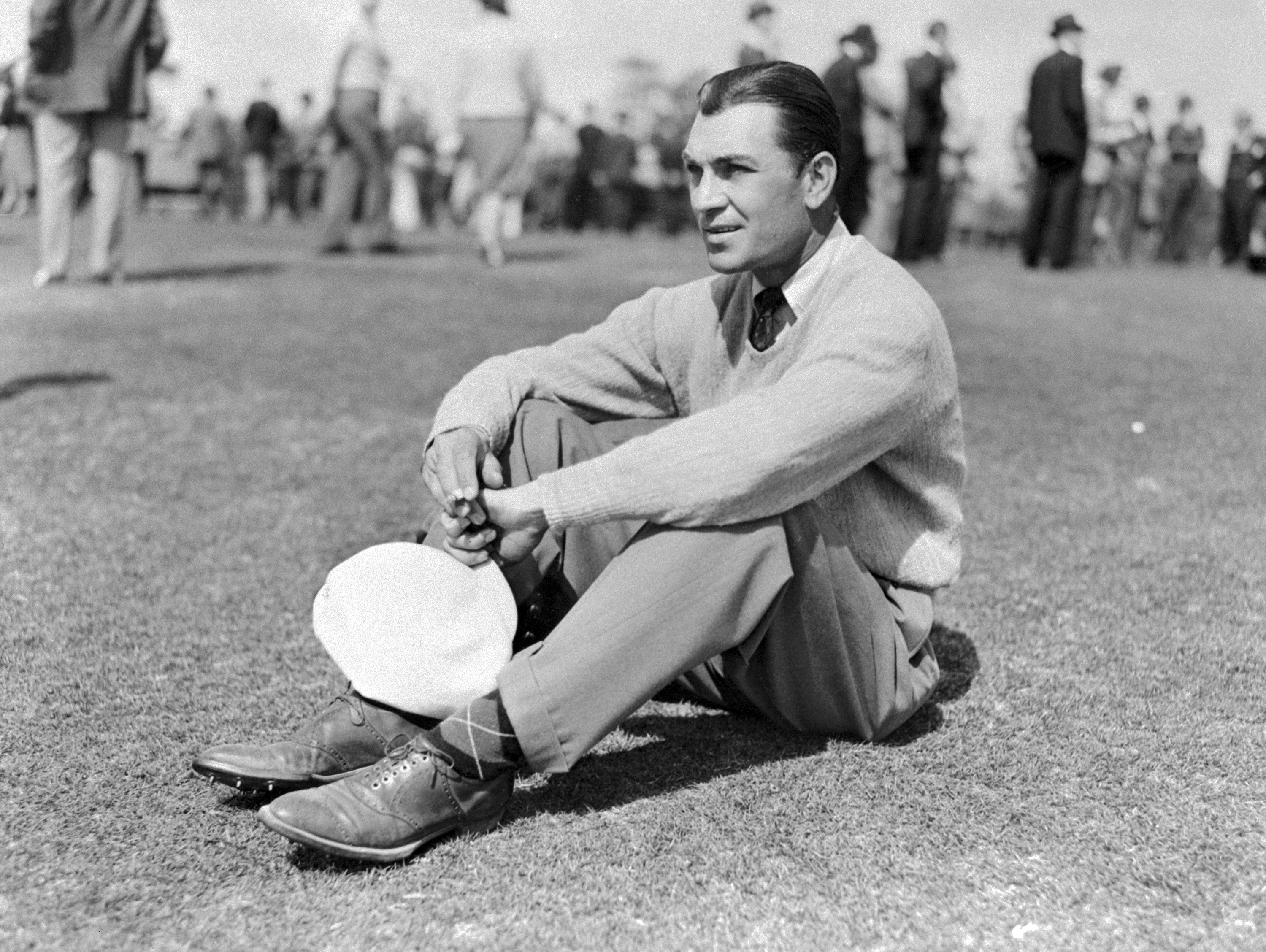
Off the course, Hogan started his own equipment company in 1953. With three Major titles to boot, that was quite a year for “The Hawk.” He sold the company in 1960 but it remained one of the more famous names in manufacturing for the next 50 plus years. He was also famous for his instruction and his book, “The Modern Fundamentals of Golf,” is one of the most famous instructional golf books ever written.
Hogan is remembered for his incredible, repeating swing, his technical prowess and his consummate professionalism. He received numerous accolades through his life and, since his death in 1997 at the age of 84, he has consistently been placed in the top-five of rankings that consider the best golfers of all time.
Bobby Jones
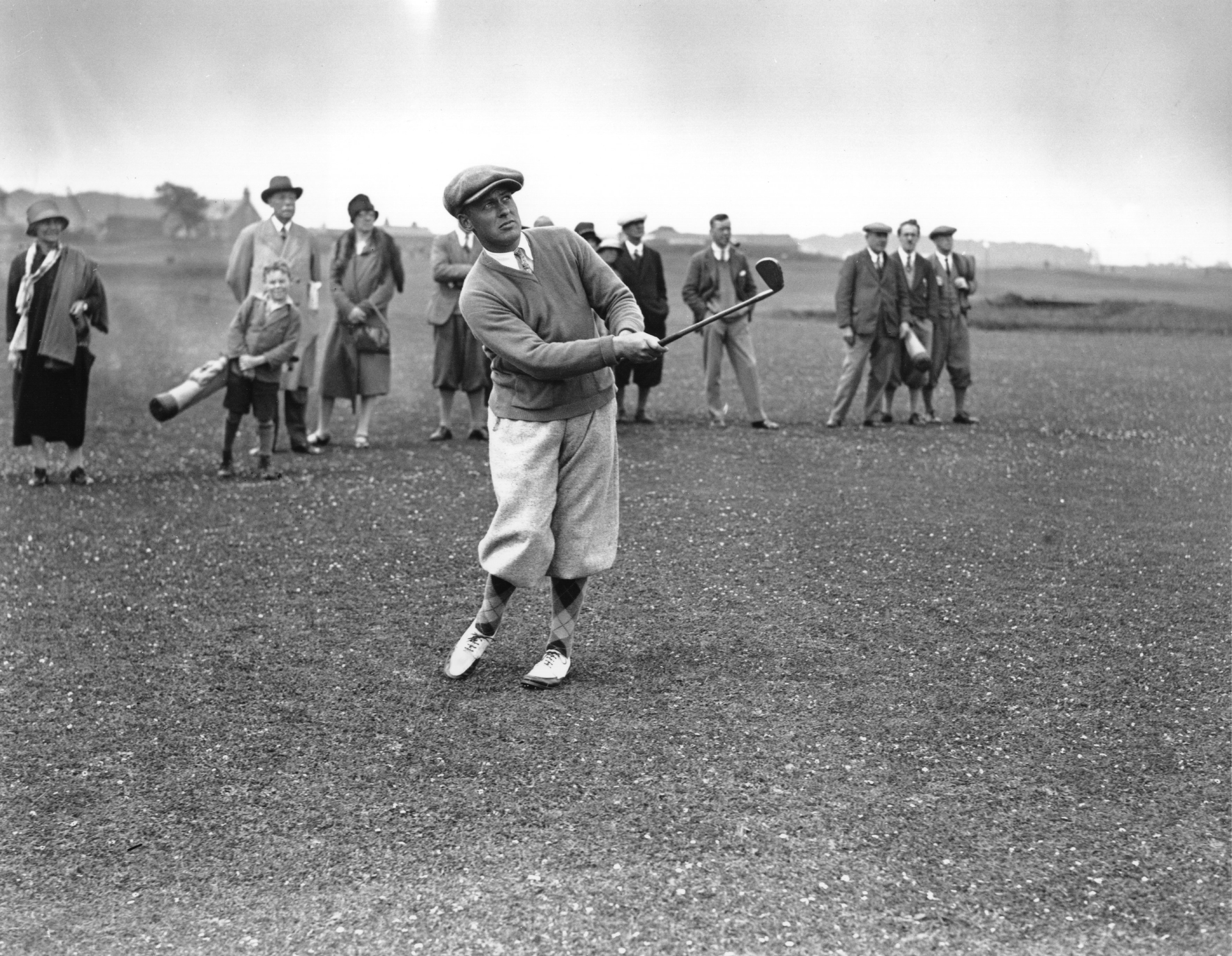
Bobby Jones in 1927
The greatest ever amateur golfer, Jones’ brief playing career was one of glittering brilliance. In 1930 he won the US and British Amateurs as well as the US and British Opens, a feat referred to as the “impregnable quadrilateral” or sometimes the “Grand Slam.” It’s something that will surely never be replicated. He won the US Open four times and the British Open on three occasions.
Jones gave up competitive golf at the age of 28 but he remained a hugely influential figure within the game and perhaps his most tangible contribution to the sport was his co-founding of Augusta National Golf Club and establishment of The Masters Tournament.
Born in 1902, 10 years before Hogan, Jones enjoyed early success in the amateur game, displaying great skills as a teenager. He played exhibition matches during the First World War. He started to win tournaments and look towards playing Major golf – The 1920 US Open was his first Major outing, aged just 18.
What should be noted is that while he was playing golf at a hugely high level, he didn’t neglect his education. He earned a degree in mechanical engineering from Georgia Tech and would latterly convert to law and pass the Georgia bar exam in 1926. Jones was always clear that his life would not be as a professional golfer, he would follow his father into the law.
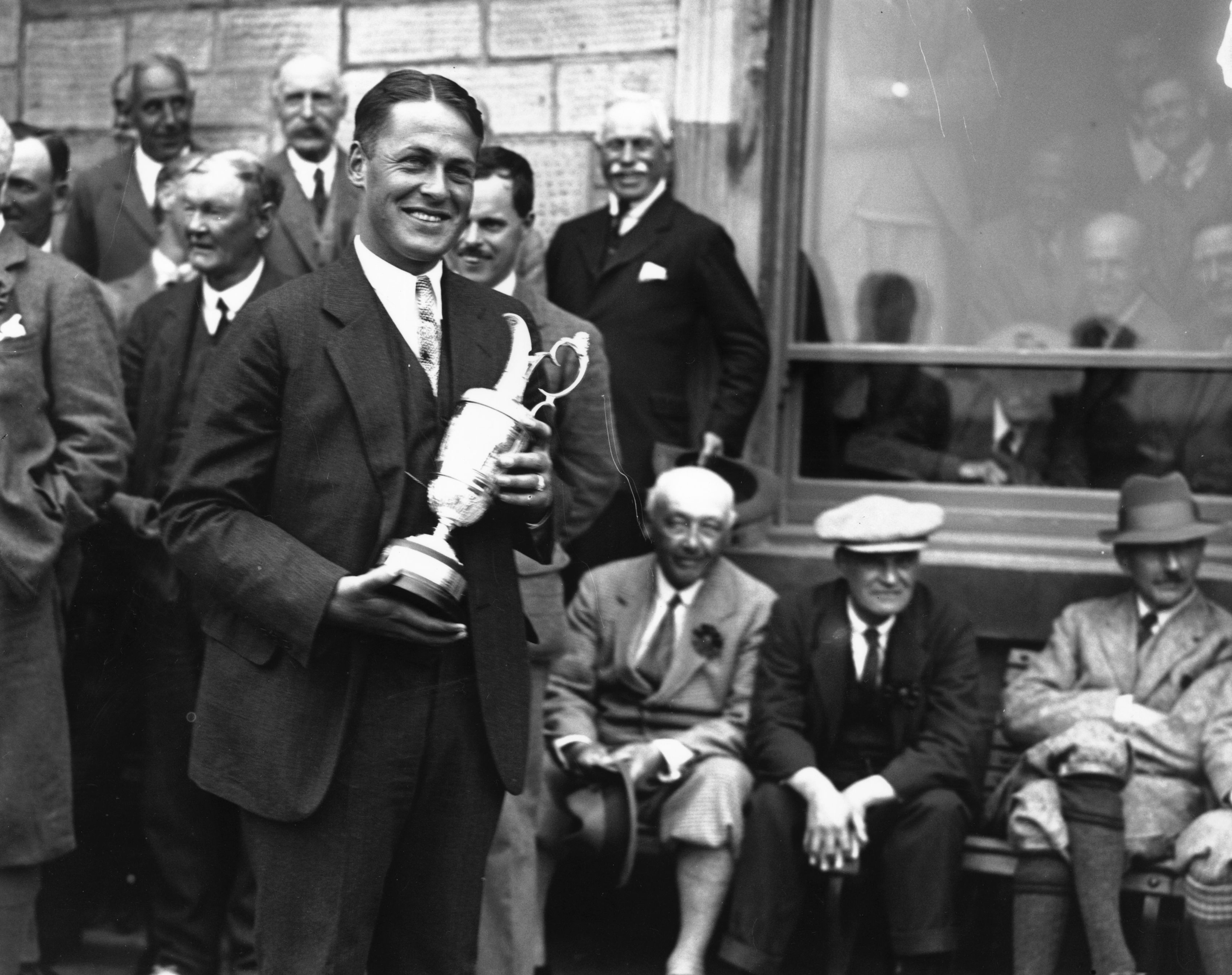
Bobby Jones with the Claret Jug in St Andrews
Jones has a great affinity with the home of golf – St Andrews. In 1958 Bobby Jones was named a Freeman of St Andrews. Although just 56, by then he suffered from a degenerative condition affecting his motor control. As a result he was unable to walk unaided. But, at the ceremony in the Younger Hall he rose from his seat and walked without help to the lectern. “I could take out of my life everything but my experiences at St Andrews and I’d still have a rich full life.” He said.
The man from Atlanta had come a long way since his first visit to the Auld Grey Toon for the 1921 Open. An impetuous young 19-year-old, Jones was touted as the next big thing in the British press. But his golf failed to match the hype. On the 11th hole of the third round he ripped up his scorecard in a fit of pique and was later disqualified.
Jones returned to St Andrews for the 1926 Walker Cup (an event he played in on five occasions), and began to understand the subtleties and nuances of the Old Course.
When he holed the winning putt in the 1927 Open at St Andrews, 12,000 people swarmed the 18th green. He’d secured a place in the hearts of the Scottish people.
St Andrews also played a part in Jones’ famous Grand Slam of 1930. The American won the British Amateur around the Old Course before going on to claim the Open Championship, the US Open Championship and the US Amateur in the same year.
Jones won 34 tournaments in his short playing career, including seven Majors (four US Opens and three Opens) and six Amateurs (five US Amateur Championships and one Amateur Championship).
His star shone incredibly brightly as a player during the 1920s but he continued to work hard after his retirement from competition, both as a lawyer and as a figure within golf. He actually turned pro in 1930 to be able to make money from instruction and through co-developing the first set of matched steel-shafted irons.
Together with his friend Clifford Roberts, he established Augusta National Golf Club and The Masters Tournament – perhaps his greatest legacy.
The Great Professional Vs The Greatest Amateur
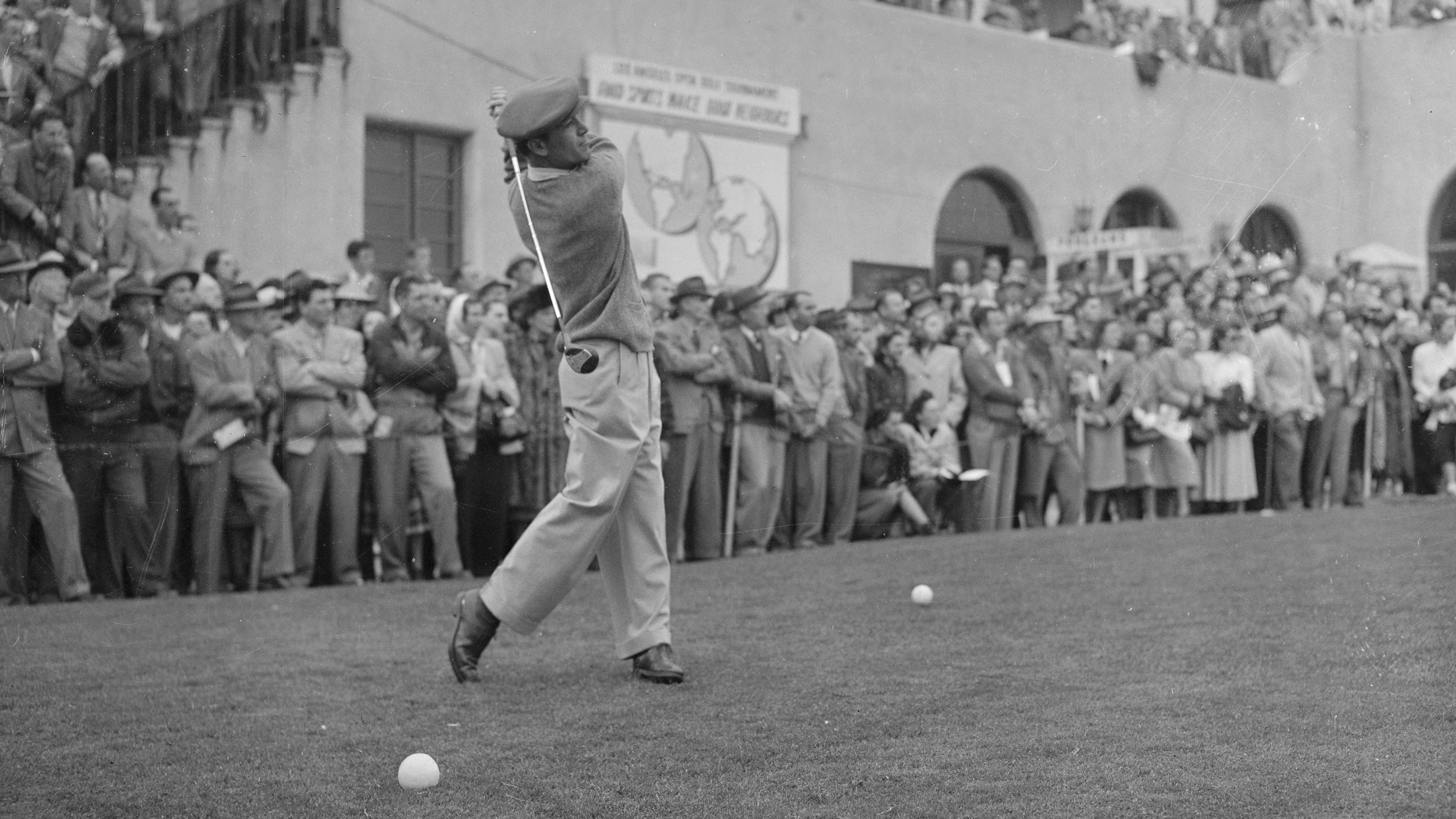
Hogan tees off
Both Hogan and Jones enjoyed remarkable careers and it’s impossible to say which was better. Hogan focused on playing golf and enjoyed massive success, winning 64 PGA Tour events and influencing countless future greats with his technical proficiency. Jones only played until he was in his late 20s, achieving great success and accolades that will never be repeated. He also continued to be successful as a lawyer, a businessman and a visionary in golf up until his death in 1971. Hogan and Jones are two of the most important figures in the history of golf.

Fergus is Golf Monthly's resident expert on the history of the game and has written extensively on that subject. He has also worked with Golf Monthly to produce a podcast series. Called 18 Majors: The Golf History Show it offers new and in-depth perspectives on some of the most important moments in golf's long history. You can find all the details about it here.
He is a golf obsessive and 1-handicapper. Growing up in the North East of Scotland, golf runs through his veins and his passion for the sport was bolstered during his time at St Andrews university studying history. He went on to earn a post graduate diploma from the London School of Journalism. Fergus has worked for Golf Monthly since 2004 and has written two books on the game; "Great Golf Debates" together with Jezz Ellwood of Golf Monthly and the history section of "The Ultimate Golf Book" together with Neil Tappin , also of Golf Monthly.
Fergus once shanked a ball from just over Granny Clark's Wynd on the 18th of the Old Course that struck the St Andrews Golf Club and rebounded into the Valley of Sin, from where he saved par. Who says there's no golfing god?